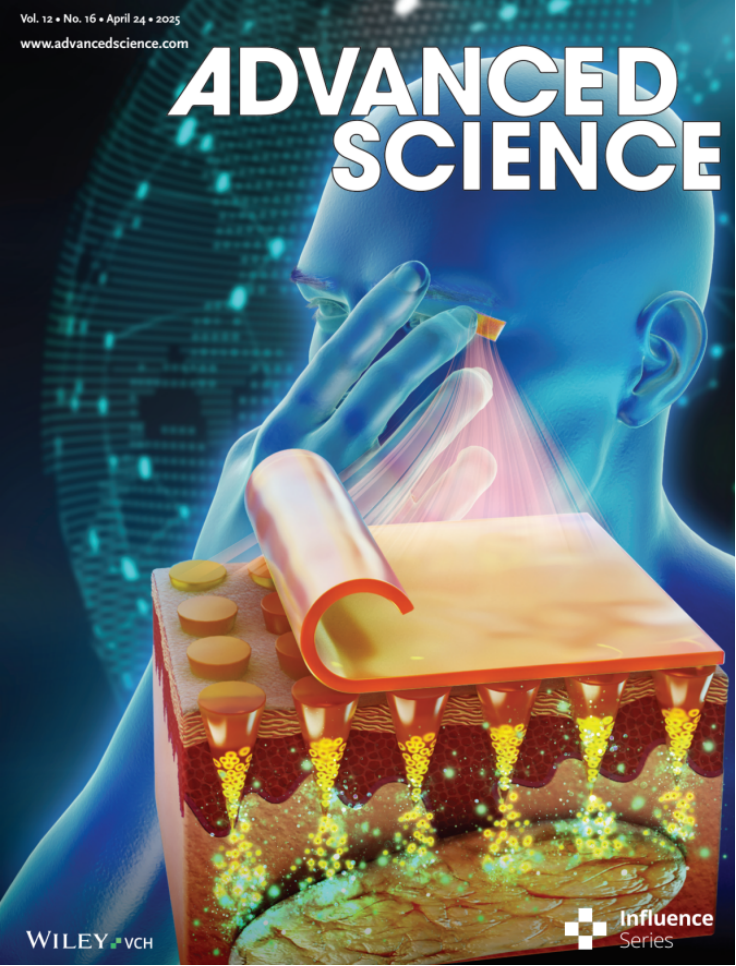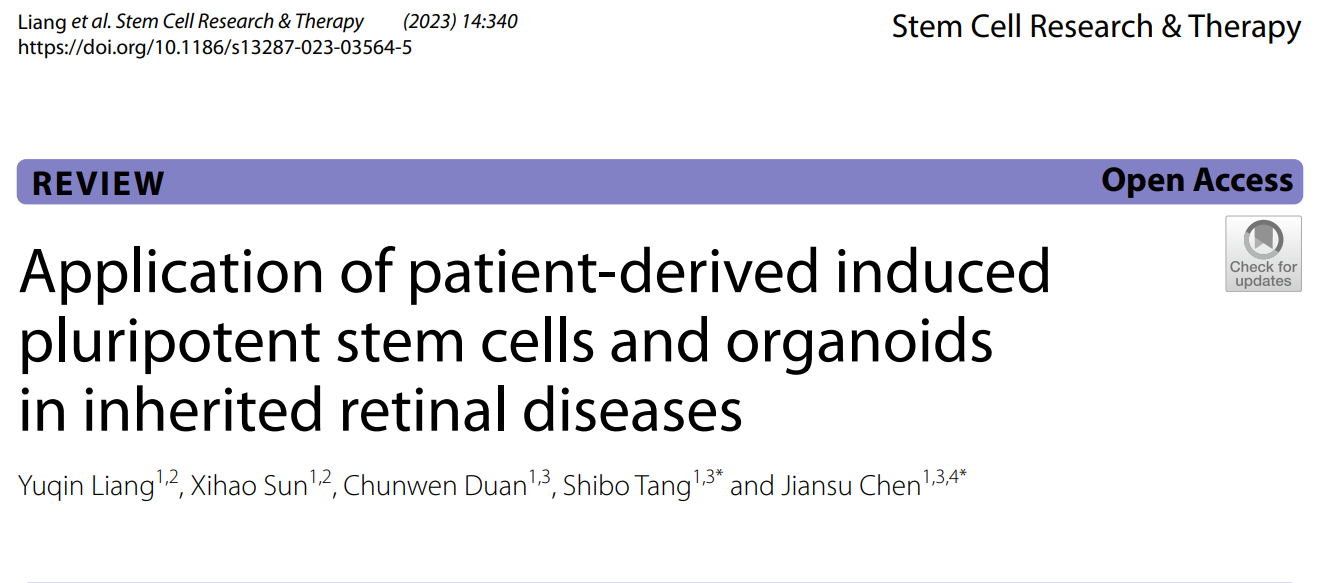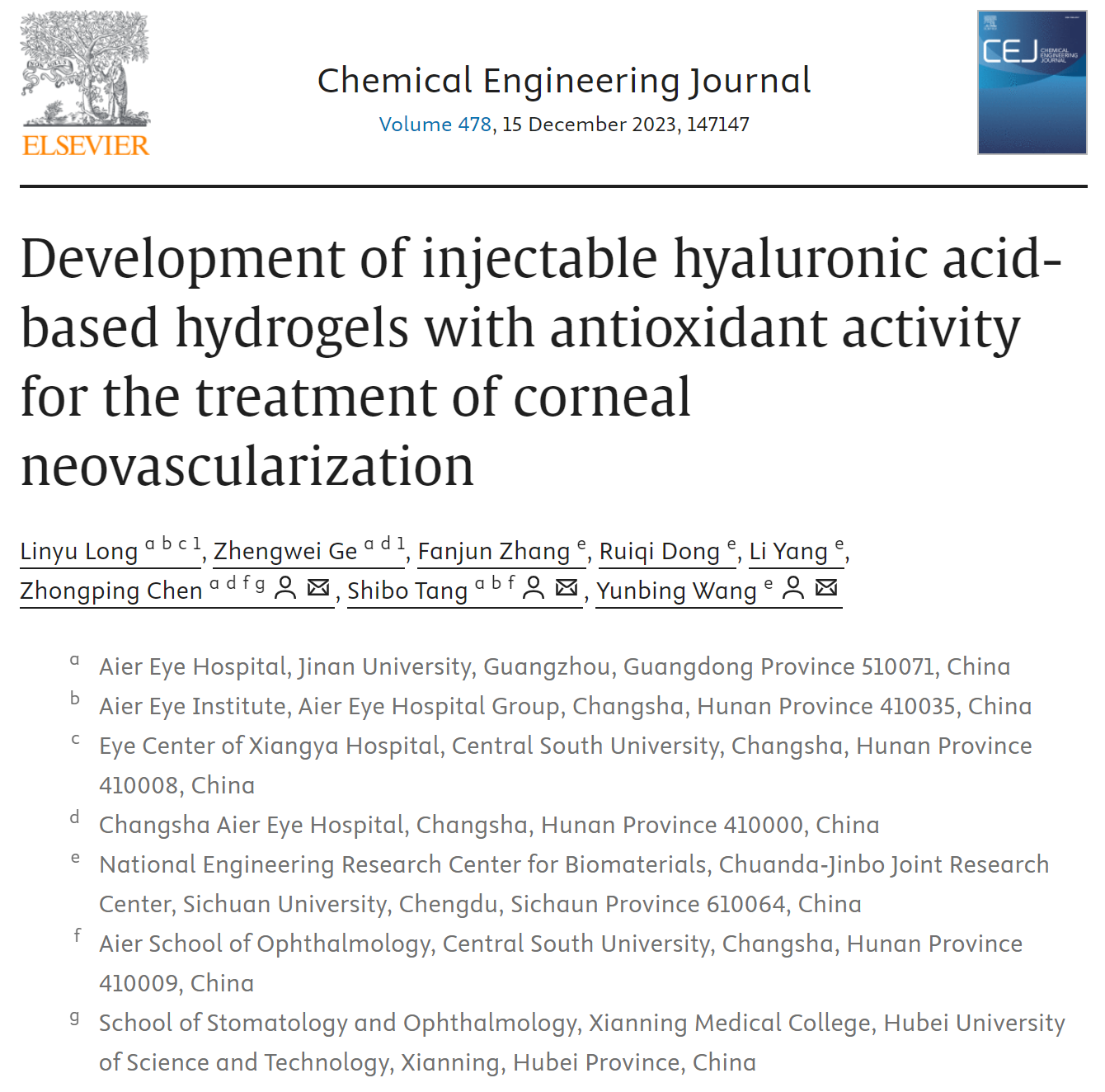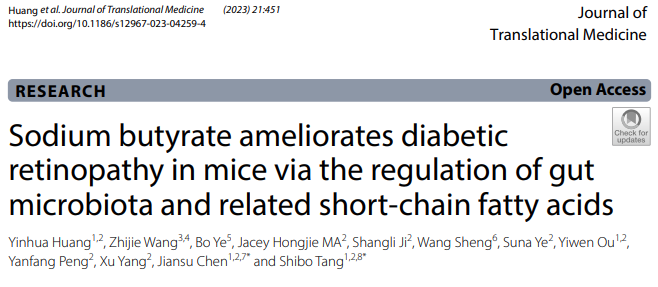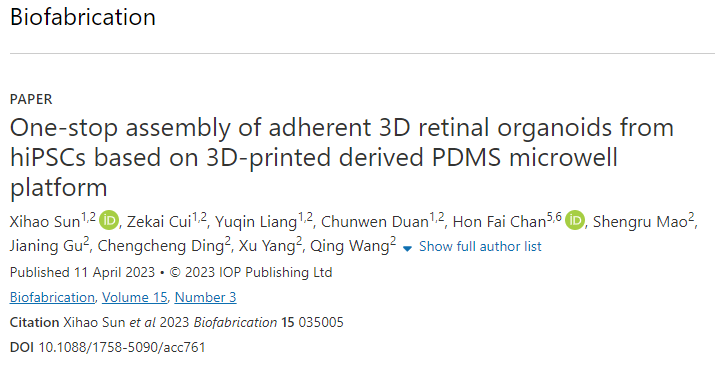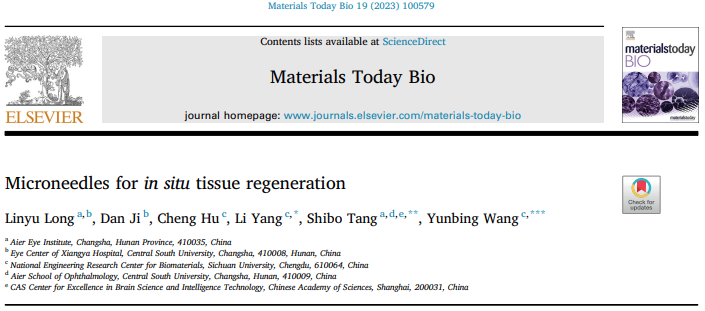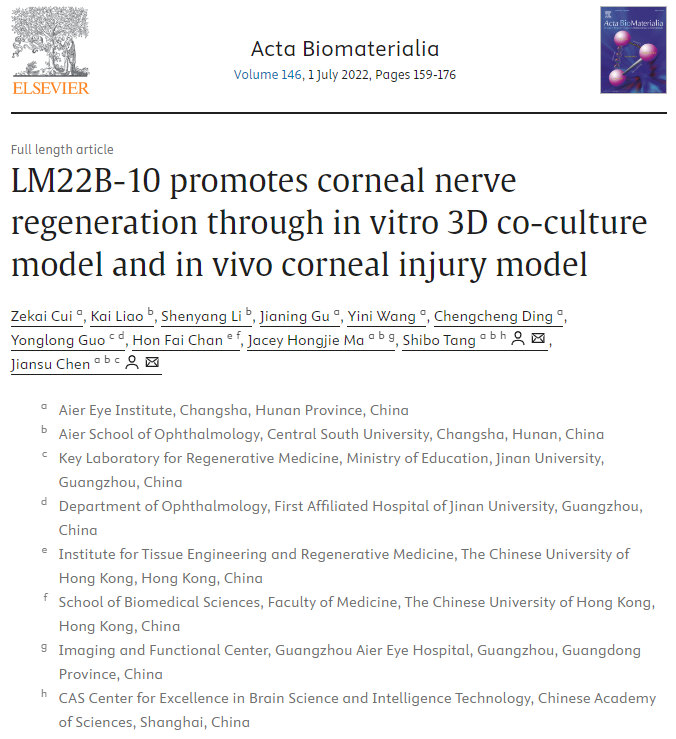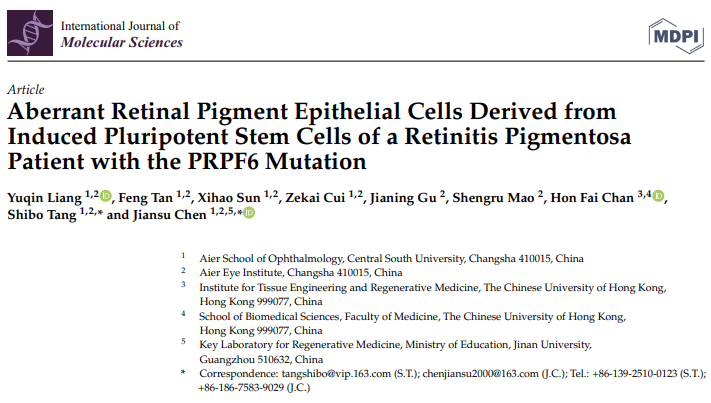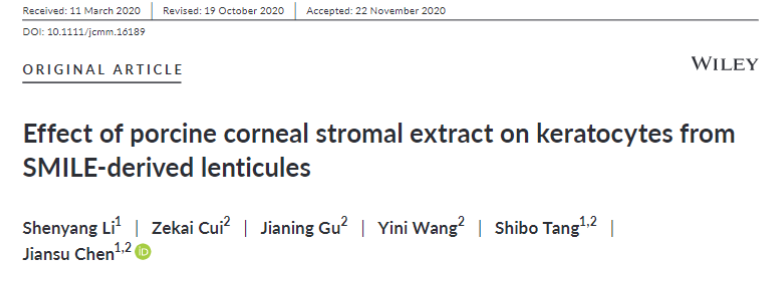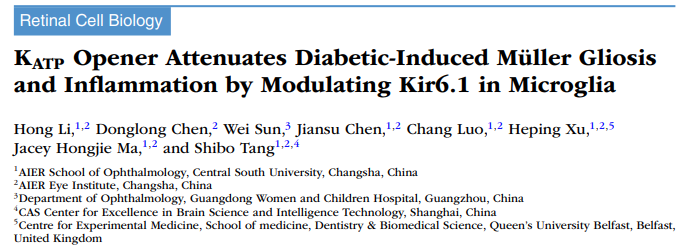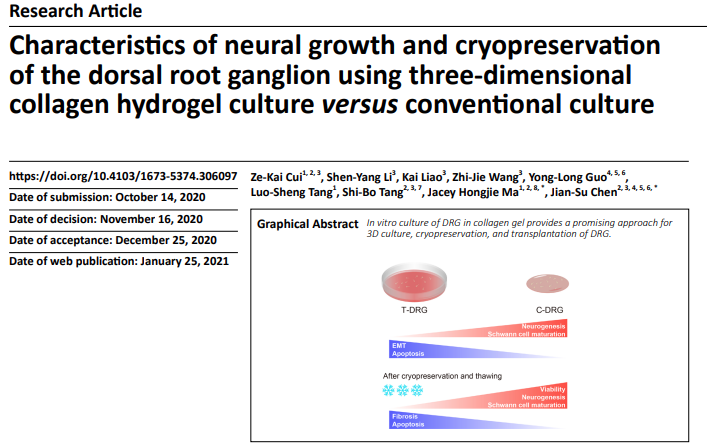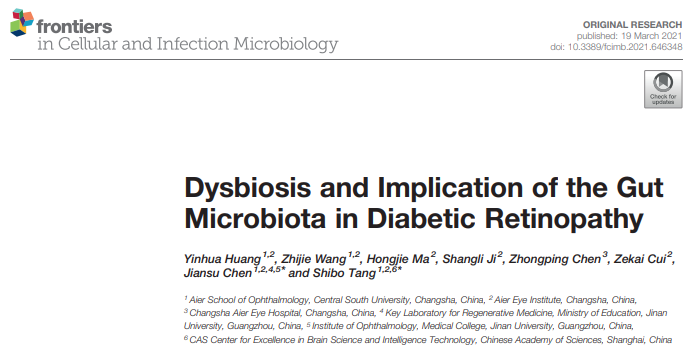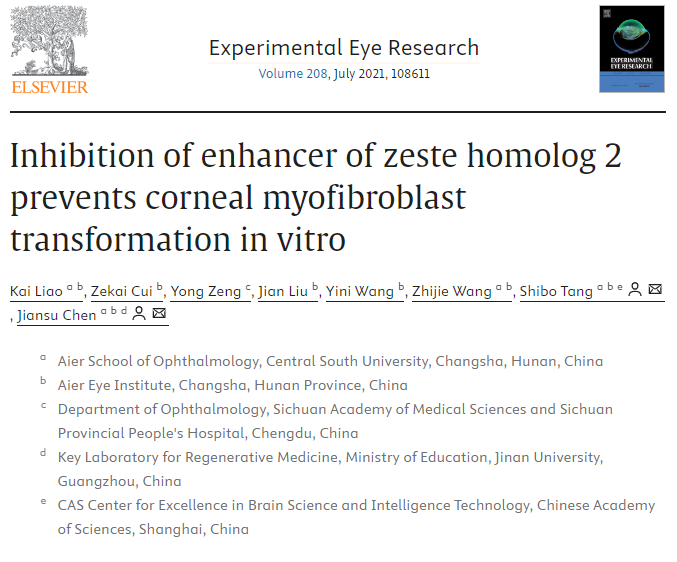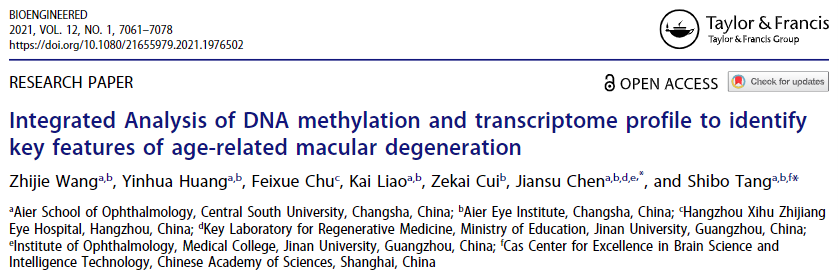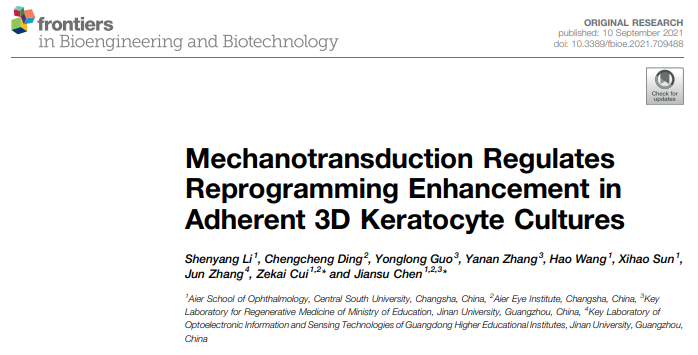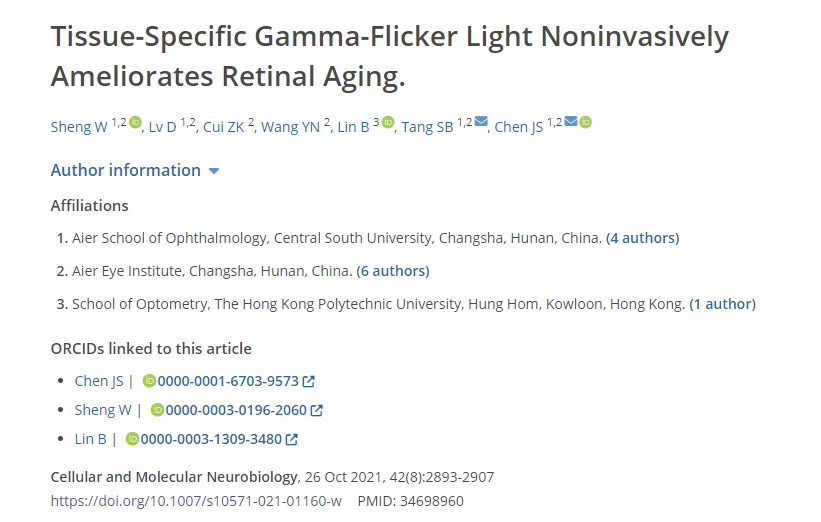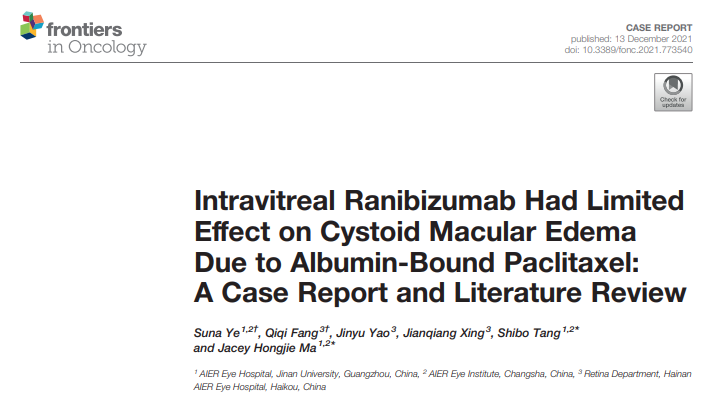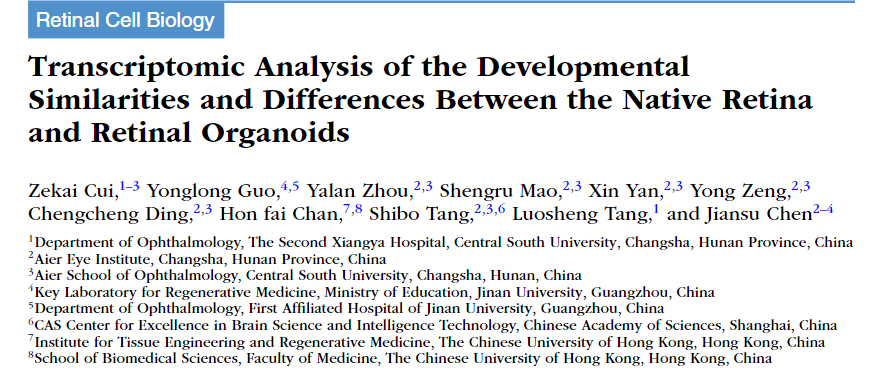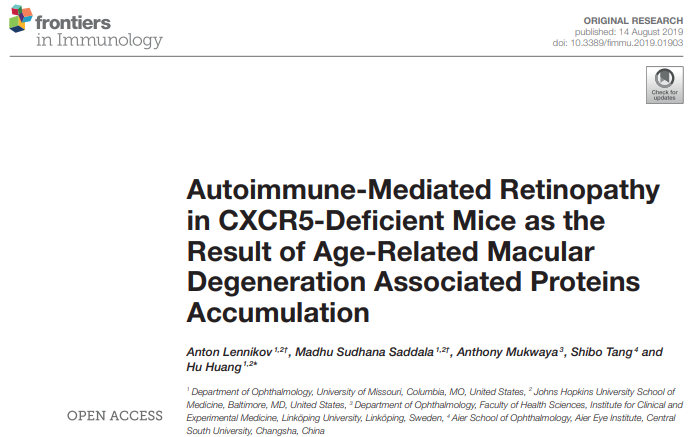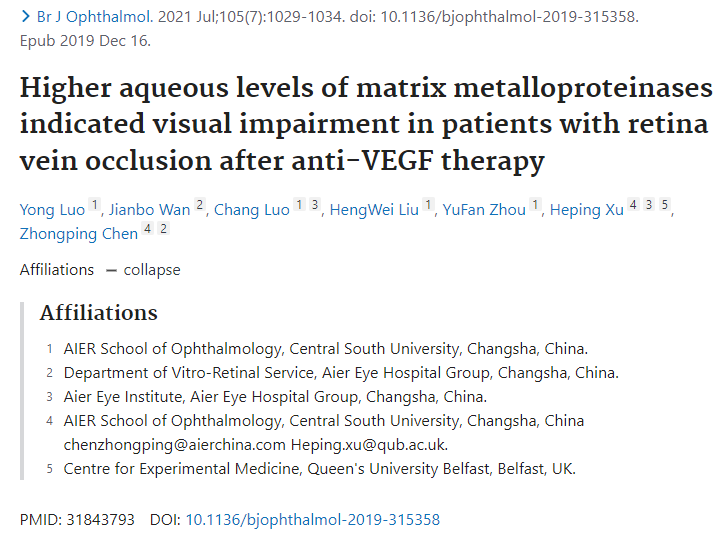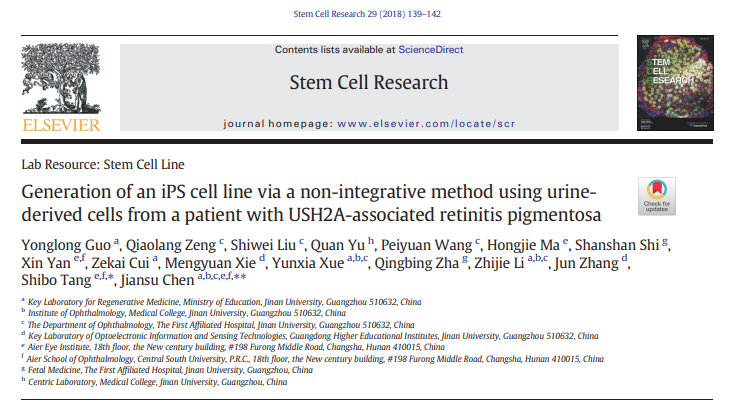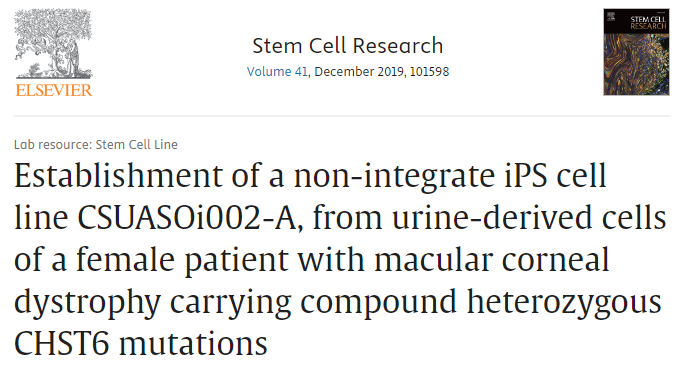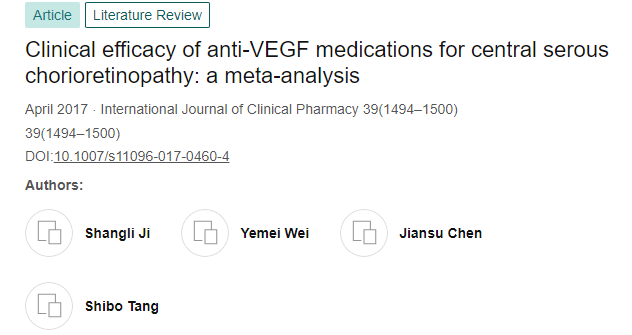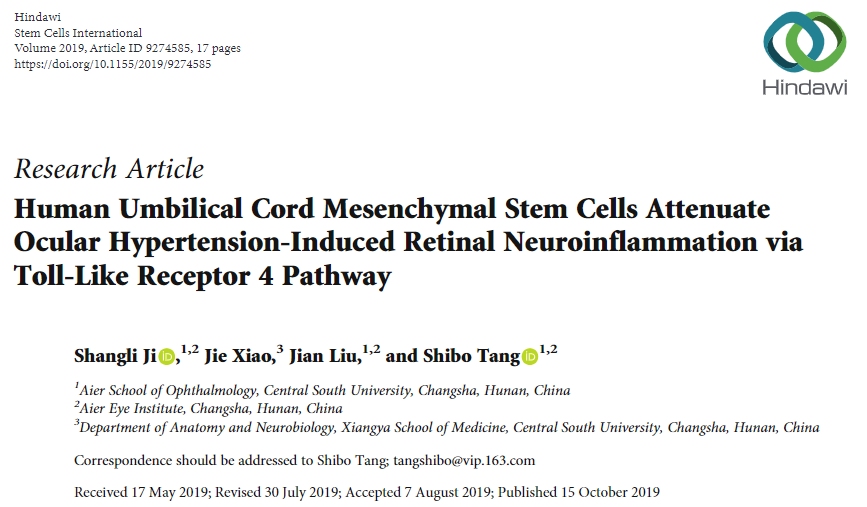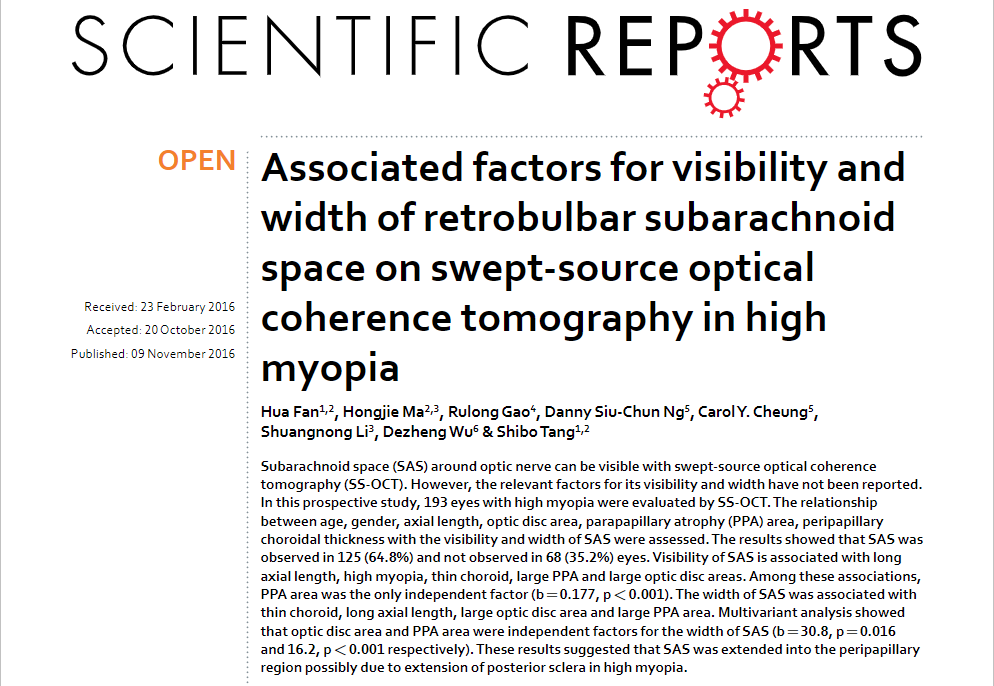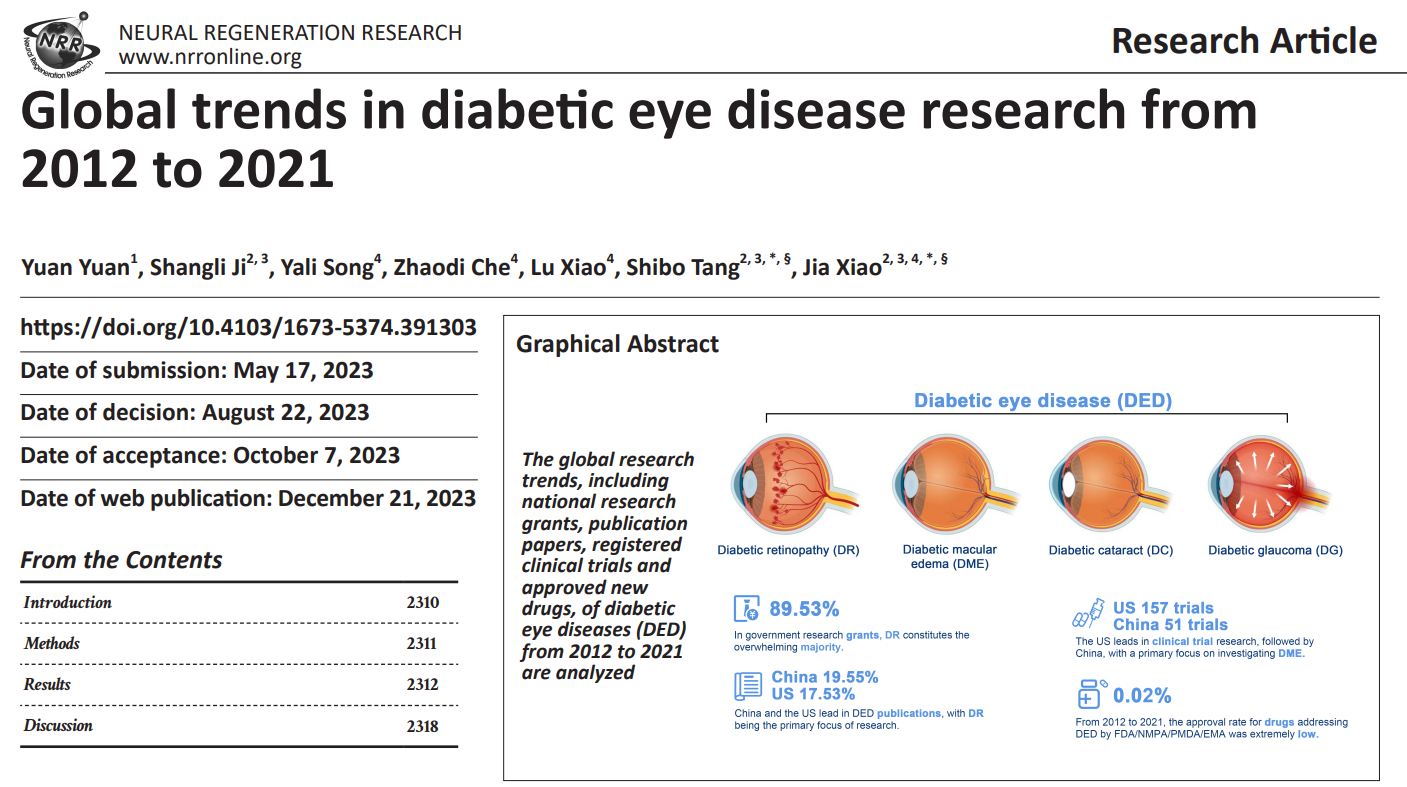- 首页
- 关于我们
概况介绍 研究方向 人才培养 委员会/committee
- 员工团队
特聘专家 主要领导 行政团队 技术团队 PI团队- 科研平台
中心实验室 实验动物中心 生物样本库- 最新资讯
- 首页
- 关于我们
概况介绍 研究方向 人才培养 委员会/committee
- 员工团队
特聘专家 主要领导 行政团队 技术团队 PI团队- 科研平台
中心实验室 实验动物中心 生物样本库- 最新资讯
Neuroprotection of Transplanting Human Umbilical Cord Mesenchymal Stem Cells in a Microbead Induced Ocular Hypertension Rat Model发布日期: 2024-09-03
ABSTRACT
Purpose: The purpose of this study is to investigate the potential therapeutic benefits of intravitreally transplanted human umbilical cord mesenchymal stem cells (UC-MSCs) in an animal model of microbead-injection-induced ocular hypertension (OHT).
Methods: UC-MSCs were isolated from human umbilical cords and then cultured. The OHT model was induced via intracameral injection of polystyrene microbeads in Sprague–Dawley adult rat eyes. Fifty-four healthy adult rats were randomly divided into three groups: normal control, OHT model treated with intravitreal transplantation of UC-MSCs, or phosphate-buffered saline (PBS). Two days after OHT was induced, either 5 µl 105 UC-MSCs suspension or PBS was injected into the vitreous cavity of rats. UC-MSCs localization and integration were examined via immunohistochemistry. Neuroprotection was quantified by counting retinal ganglion cells (RGCs) and axons 2 weeks following transplantation. The expression levels of glial-derived neurotrophic factor (GDNF), brain-derived neurotrophic factor (BDNF), and glial fibrillary acidic protein (GFAP) were assessed via immunohistochemistry and Western blot. Functional recovery was assessed 2 weeks after transplantation via scotopic threshold response (STR) electroretinography.
Results: Elevated IOP levels were sustained at least 3 weeks after intracameral microbead injection and the number of β-III-tubulin+ RGCs significantly declined compared to PBS-injected eyes. UC-MSCs survived for at least 2 weeks after intravitreal transplantation and predominantly located in the vitreous cavity. A fraction of cells migrated into the ganglion cell layer of host retina, but without differentiation. Intravitreal UC-MSC transplantation resulted in increased number of RGCs, axons, and increased expression of GDNF and BDNF but decreased expression of GFAP. Intravitreal delivery of UC-MSCs significantly improved the recovery of the positive STR.
Conclusions: Intravitreal transplantation of UC-MSCs revealed the neuroprotection in the microbead-injection induced OHT. The effects could be related to the secretion of tropic factors (BDNF and GDNF) and the modulation of glial cell activation.
相关文章-
近日,爱尔眼科与南开大学联合科研团队取得重大突破,其研究成果在国际学术期刊《Advanced Science》(中科院 1区 TOP,影响因子14.3)上重磅发...2025-05-19
-
Inherited retinal diseases (IRDs) can induce severe sight-threatening retinal de...2024-09-11
-
Corneal neovascularization (CNV) is a condition that can severely adversely affe...2024-09-05
-
Diabetic retinopathy (DR) is a common complication of diabetes and has a high pr...2024-09-04
-
Diabetic retinopathy (DR) development is associated with disturbances in the gut...2024-09-04
-
The three-dimensional (3D) retinal organoids (ROs) derived from human induced pl...2024-09-04
-
Tissue injury is a common clinical problem, which may cause great burden on pati...2024-09-04
-
Corneal nerve wounding often causes abnormalities in the cornea and even blindne...2024-09-04
-
Pre-mRNA processing factors (PRPFs) are vital components of the spliceosome and ...2024-09-04
-
Propagating large amounts of human corneal stromal cells (hCSCs) in vitro while ...2024-09-04
-
This study aimed to determine the effect of pinacidil, a nonselective KATP chann...2024-09-04
-
In vertebrates, most somatosensory pathways begin with the activation of dorsal ...2024-09-04
-
The pathogenesis of type 2 diabetes mellitus (T2DM) is commonly associated with ...2024-09-04
-
Corneal fibroblast can be transformed into corneal myofibroblasts by TGF-β1.2024-09-04
-
Age-related macular degeneration (AMD) is a common vision-threatening disease. T...2024-09-04
-
Suspended spheroid culture using ultralow attachment plates (ULAPs) is reported ...2024-09-04
-
Purpose: Retinal inflammation is involved in the pathogenesis of several retinal...2024-09-03
-
Aging is a risk factor for multiple retinal degeneration diseases. Entraining br...2024-09-03
-
Angiographically silent cystoid macular edema (CME) is a rare complication from ...2024-09-03
-
The neuroretina is protected by its own defense system, that is microglia and th...2024-09-03
-
Purpose: We performed a bioinformatic transcriptome analysis to determine the al...2024-09-03
-
Previous research has shown that CXCR5−/− mice develop retinal degeneration (RD)...2024-09-03
-
Purpose: To investigate the levels of matrix metalloproteinases (MMPs) in aqueou...2024-09-03
-
In vitro generation of a functional retinal pigment epithelium (RPE) monolayer s...2024-09-03
-
We have established an induced pluripotent stem (iPS) cell line using urine-deri...2024-09-03
-
Purpose: The purpose of this study is to investigate the potential therapeutic b...2024-09-03
-
We report the human induced pluripotent stem cell line (iPSC) CSUASOi002-A, gene...2024-09-03
-
Background Central serous chorioretinopathy (CSC) is a widespread retinal disord...2024-09-03
-
Glaucoma is characterized by progressive, irreversible damage to the retinal gan...2024-09-03
-
Subarachnoid space (SAS) around optic nerve can be visible with swept-source opt...2024-09-03
-
Diabetic eye disease refers to a group of eye complications that occur in diabet...2023-05-01
- 员工团队
- 员工团队


